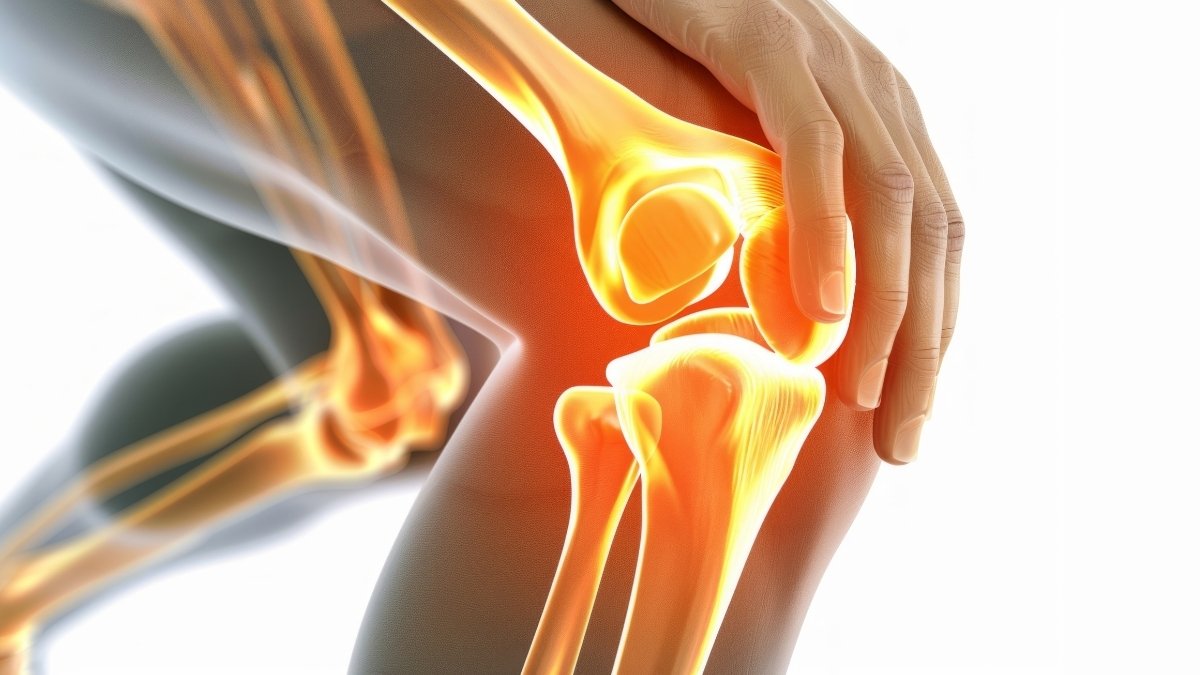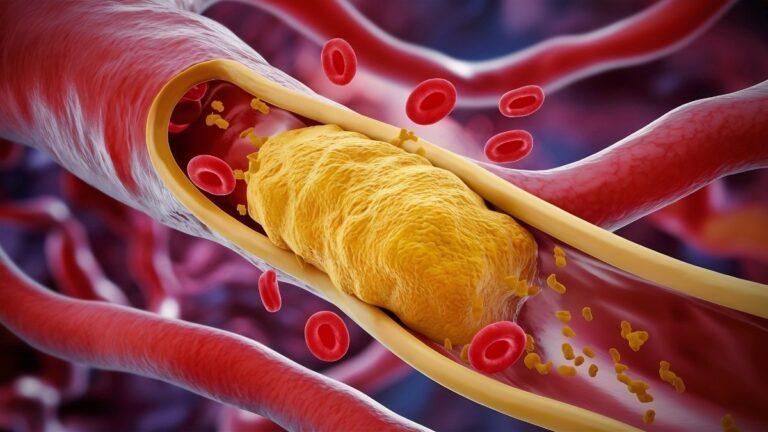You Won’t Believe these 12 Foods That Actually Ease Joint Pain (And What to Avoid)
What if your kitchen holds more powerful pain relief than your medicine cabinet? Recent research from major medical institutions shows that dietary changes can reduce joint inflammation as effectively as some over-the-counter NSAIDs.
With over 300 million people worldwide suffering from joint pain and osteoarthritis, many rely on medications that damage kidneys and liver long-term. This guide cuts through the marketing hype to reveal 12 scientifically-proven foods that ease joint pain.
You’ll discover exact serving sizes, which foods to avoid that worsen inflammation, quick meal ideas, and how an anti-inflammatory diet provides natural joint pain relief without harmful side effects.
Your knees hurt when you climb stairs. Your hands ache when you open jars. Your joints feel stiff every morning.
12 Anti-Inflammatory Foods for Joint Pain Relief
Science-backed foods to reduce joint pain naturally
⚠️ Foods to AVOID
📅 Sample Daily Plate
✓ Quick Start Checklist
- Add fatty fish twice this week (easiest: canned salmon)
- Switch to extra virgin olive oil for cooking
- Have a cup of berries with breakfast daily
You’re not alone. Millions of people wake up with joint pain every single day. The good news? What you eat can help reduce that pain.
This isn’t about miracle cures or overnight fixes. It’s about real foods that fight inflammation and protect your joints. Let’s talk about what actually works.
Why Your Joints Hurt (And How Food Helps)
Inflammation is your body’s alarm system. It rushes to help when you get injured or sick. That’s good.
But sometimes inflammation doesn’t turn off. It keeps attacking your joints day after day. That’s bad.

There are two main types of arthritis: Rheumatoid arthritis happens when your immune system attacks your joints, while osteoarthritis develops from wear and tear plus inflammation.
Here’s what matters: Food affects inflammation through antioxidants, omega-3s, polyphenols, and fiber. These compounds reduce the inflammatory proteins that damage your joints.
Quick Reality Check: You won’t feel better overnight. Food isn’t medicine. But eating the right foods consistently for a few months can make a real difference in how your joints feel.
The 12 Best Foods for Your Joints
1. Fatty Fish (Salmon, Mackerel, Sardines)
Fish is probably the most powerful anti-inflammatory food you can eat.
Why? Omega-3 fatty acids in fish reduce C-reactive protein and interleukin-6, and studies show fish oil supplements reduce joint swelling, pain, and morning stiffness in people with rheumatoid arthritis.
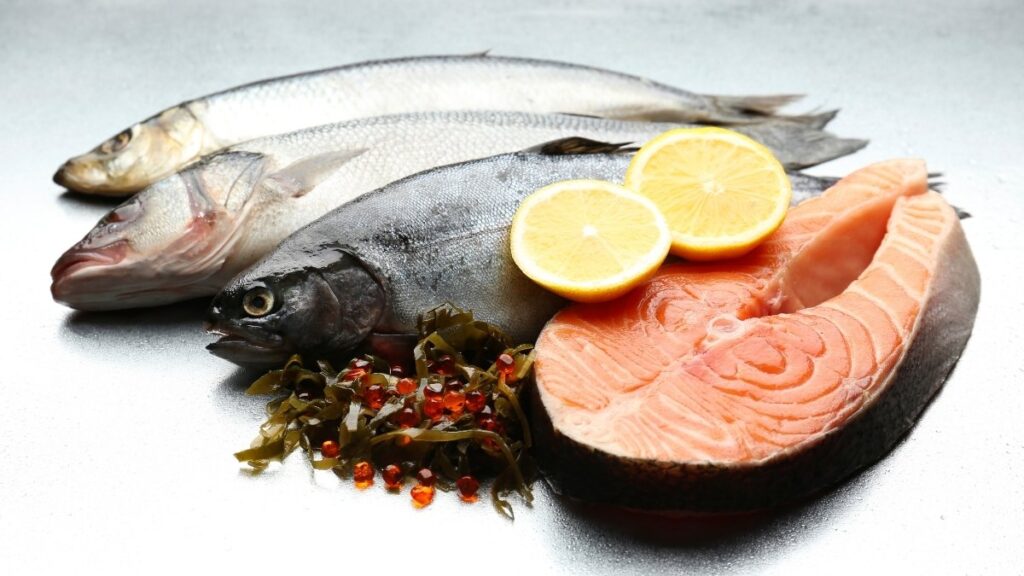
Omega-3s work by reducing inflammatory proteins in your body. Less inflammation means less pain.
Eat 3-4 ounces of fish twice a week at minimum, though arthritis experts recommend eating it more often.
What to Buy:
- Wild-caught salmon (fresh or frozen)
- Canned sardines (with bones for extra calcium)
- Mackerel fillets
- Herring
Simple Cooking Tips: Bake fish at 400°F for 12-15 minutes. Season with lemon and herbs. Don’t add extra butter or oil—fish has healthy fat already.
If you hate fish, take 600-1,000mg of fish oil supplements daily. Get one that says “molecularly distilled” to avoid mercury.
Money-Saving Tip: Canned salmon and sardines cost less than fresh fish and work just as well. Look for BPA-free cans.
2. Berries (Blueberries, Strawberries, Raspberries)
Berries taste good and fight inflammation. That’s a win.
They’re rich in anthocyanins, which are antioxidant compounds that reduce inflammation and joint swelling, and studies found berries reduce painful joint swelling.
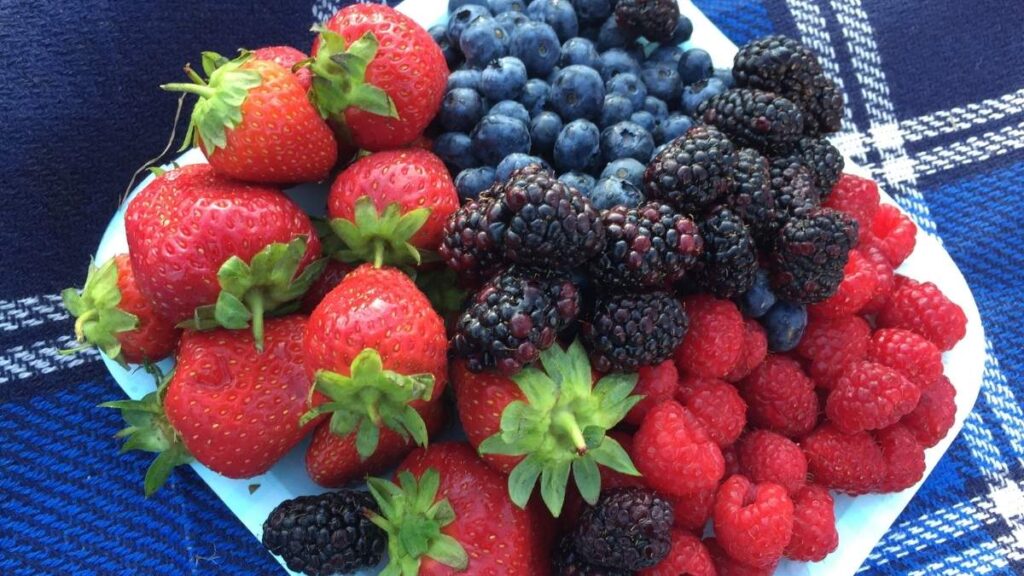
Strawberries have more vitamin C per serving than oranges. More vitamin C means better collagen production to protect your cartilage.
Eat 1 cup daily or grab a handful as a snack.
Shopping Smart: Frozen berries are just as good as fresh. They’re picked at peak ripeness and frozen immediately. Plus they cost less and last longer.
Easy Ways to Eat More Berries:
- Toss them in your morning oatmeal
- Blend into smoothies with yogurt
- Eat them plain as an afternoon snack
- Add to salads for sweetness
Bonus Fruits: Pineapple and papaya contain bromelain enzymes that reduce joint pain. Try them if berries get boring.
3. Dark Leafy Greens (Spinach, Kale, Swiss Chard)
Your mom was right about eating your greens.

Leafy greens pack vitamin K, which reduces inflammation and protects your joints. They’re full of antioxidants that fight the stress damaging your cells. And they have calcium to keep your bones strong.
Eat 2 cups raw or 1 cup cooked every day.
The Absorption Trick: Cook greens in a little olive oil. Fat helps your body absorb more nutrients. Sauté spinach with garlic for 2-3 minutes. That’s it.
Sneak Greens Into Your Diet:
- Add spinach to scrambled eggs (you won’t taste it)
- Toss kale into soups during the last 5 minutes
- Blend spinach into fruit smoothies (the fruit masks the taste)
- Mix different greens in salads for variety
Too Bitter? Try Swiss chard. It’s milder than kale. Or massage kale with lemon juice for 30 seconds—it breaks down the tough fibers and makes it sweeter.
4. Extra Virgin Olive Oil
This isn’t just any cooking oil.
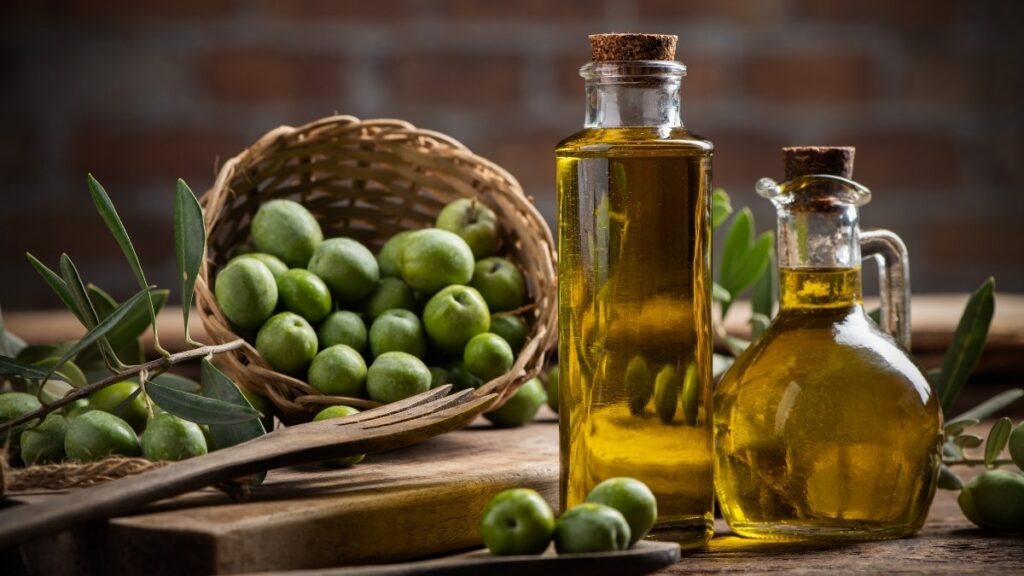
Extra virgin olive oil contains oleocanthal, which works like NSAIDs such as ibuprofen. It has healthy fats that your body actually needs.
Use 2-3 tablespoons daily and avoid canola, sunflower, or vegetable oils that can worsen inflammation.
What “Extra Virgin” Really Means: It’s the first press of olives with no chemicals. Lower quality oils don’t have the same anti-inflammatory benefits. Yes, it costs more. But you’re using it as medicine, not just flavor.
How to Use It:
- Make salad dressing (3 parts oil, 1 part vinegar)
- Drizzle over cooked vegetables
- Use for low-heat cooking (not deep frying)
- Dip bread in it instead of using butter
Upgrade Your Oil Game: Walnut oil has 10 times the omega-3s of olive oil. Mix it into salad dressings or drizzle over finished dishes. Don’t cook with it—heat destroys those omega-3s.
Storage Tip: Keep olive oil in a dark bottle away from heat and light. It goes bad faster than you think. Buy smaller bottles you’ll use within 2 months.
5. Nuts and Seeds
Grab a handful. Your joints will thank you.
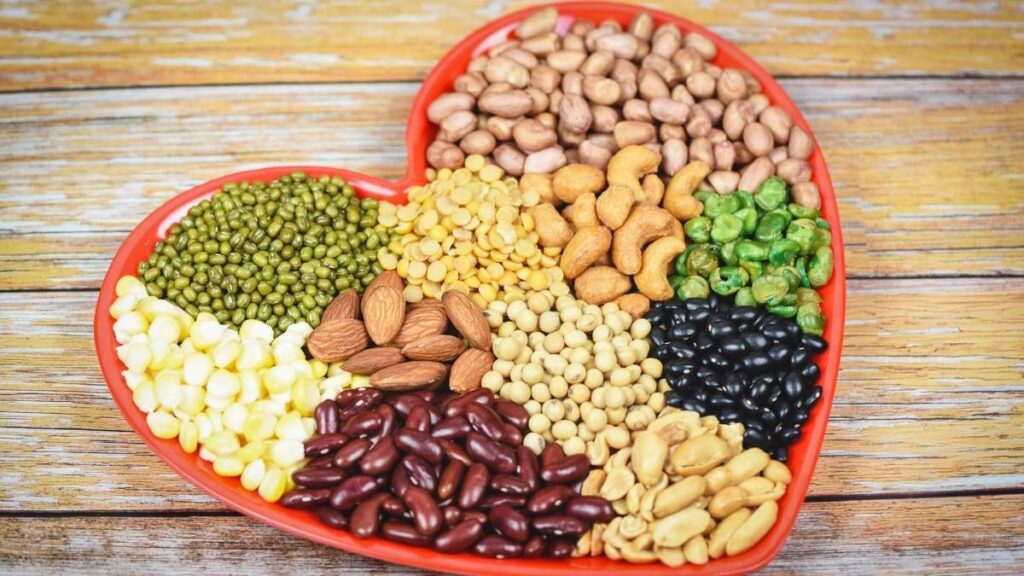
Nuts have inflammation-fighting fats and omega-3s. Studies showed people eating the most nuts had 51% lower risk of dying from inflammatory diseases like rheumatoid arthritis.
That’s huge. Nuts are also rich in vitamin B6, which lowers inflammatory markers.
Eat 1.5 ounces daily—about one handful.
Best Choices:
- Walnuts (highest omega-3s)
- Almonds (great for snacking)
- Flaxseeds (grind them or your body can’t absorb the nutrients)
- Chia seeds (add to anything)
Skip the Salted Ones: Choose unsalted, raw, or dry-roasted nuts. Salt makes you retain water, which can increase joint swelling.
Easy Ways to Eat More:
- Keep a container at your desk for afternoon hunger
- Sprinkle on yogurt or oatmeal
- Add to salads for crunch
- Make trail mix with nuts and dried berries
Can’t Chew Nuts? Try nut butters. Spread almond butter on apple slices. Mix peanut butter into oatmeal. Just check the label—you want nuts and maybe salt, not sugar and oils.
6. Turmeric and Ginger
These spices do more than add flavor.
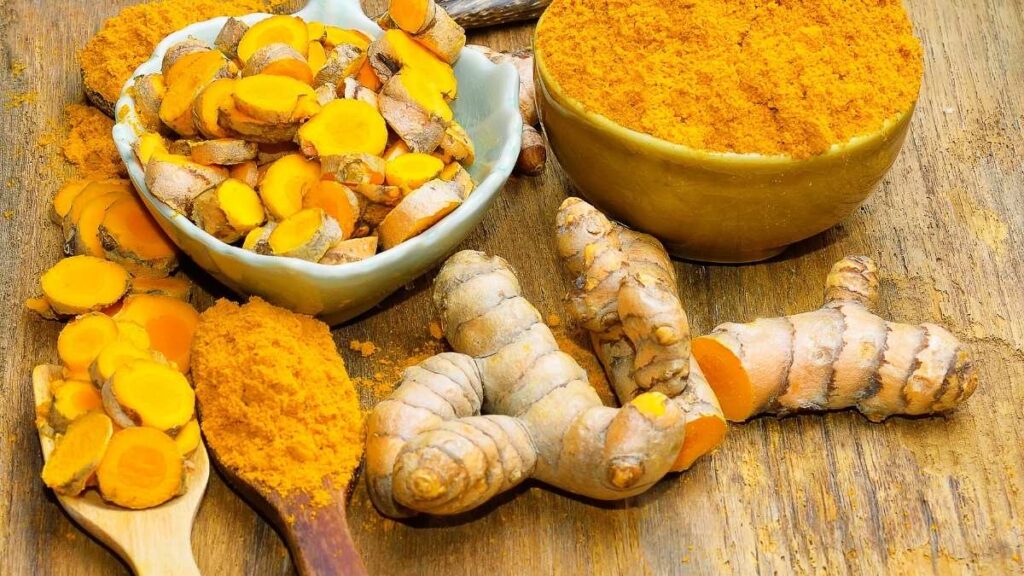
Turmeric contains curcumin that reduces joint pain and swelling by blocking inflammatory chemicals, and 2024 research found curcumin improves scores for disease activity, tender joints, and swollen joints in rheumatoid arthritis patients.
Ginger has anti-inflammatory properties similar to ibuprofen. Using ginger and turmeric together at a 5:2 ratio shows even stronger anti-inflammatory effects.
Use 1-2 teaspoons of turmeric daily and add fresh ginger as much as you want.
The Supplement Truth: Pure turmeric only contains 2-6% curcumin, so supplements may work better. If you take a supplement, look for one with black pepper extract (piperine). It increases absorption by 2,000%.
Ways to Use Them:
- Add turmeric to scrambled eggs (yes, really)
- Make golden milk (warm milk with turmeric and honey)
- Grate fresh ginger into tea
- Add both to curry dishes
- Mix into smoothies
The Black Pepper Hack: Always add black pepper when using turmeric. Without it, your body absorbs almost none of the curcumin. Just a pinch works.
Quick Ginger Tea: Slice fresh ginger. Pour boiling water over it. Steep 10 minutes. Add honey if you want sweetness. Drink this when your joints feel extra achy.
7. Green Tea
Coffee gets all the attention. But green tea might help your joints more.
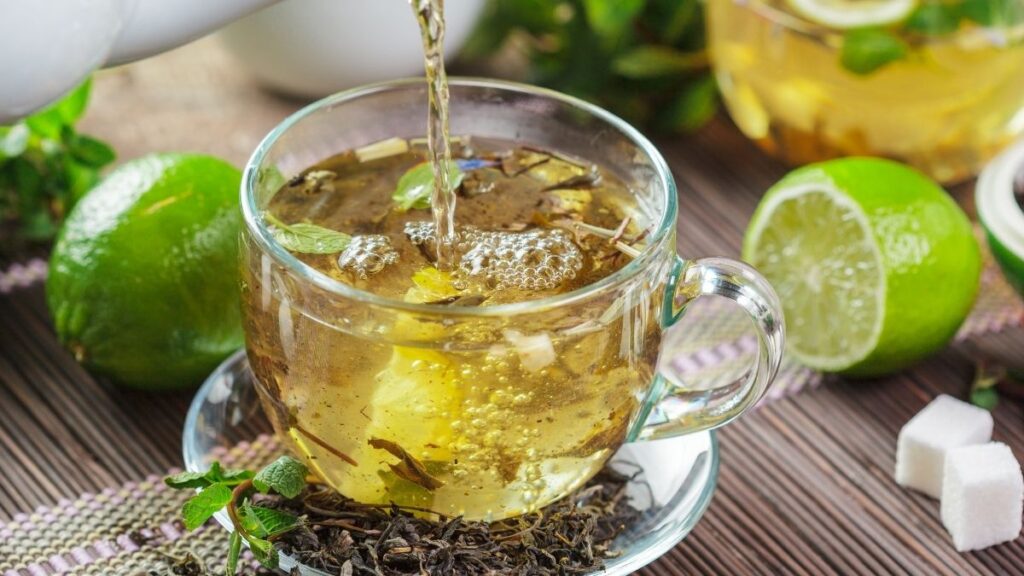
Green tea contains EGCG, an antioxidant that’s 100 times stronger than vitamins C and E, and it blocks production of molecules that cause joint damage in rheumatoid arthritis.
EGCG helps preserve cartilage and bone, and studies show green tea reduces inflammation and slows cartilage destruction.
Drink 2-3 cups daily.
Brewing Matters: Steep for 3-5 minutes in hot (not boiling) water. Too long makes it bitter. Too short and you miss the beneficial compounds.
Can’t Stand the Taste? Try these tricks:
- Add a squeeze of lemon (it also helps absorption)
- Mix in a teaspoon of honey
- Brew it weaker at first, then gradually make it stronger
- Try different brands—quality varies a lot
Caffeine Concerns: Green tea has less caffeine than coffee. Most people can drink it all day without sleep problems. But if you’re sensitive, stop drinking it by 2 PM.
Iced Version: Brew green tea normally. Let it cool. Pour over ice. Add lemon slices. This works great in summer when hot tea sounds terrible.
8. Whole Grains
White bread and white rice spike your blood sugar. That increases inflammation.
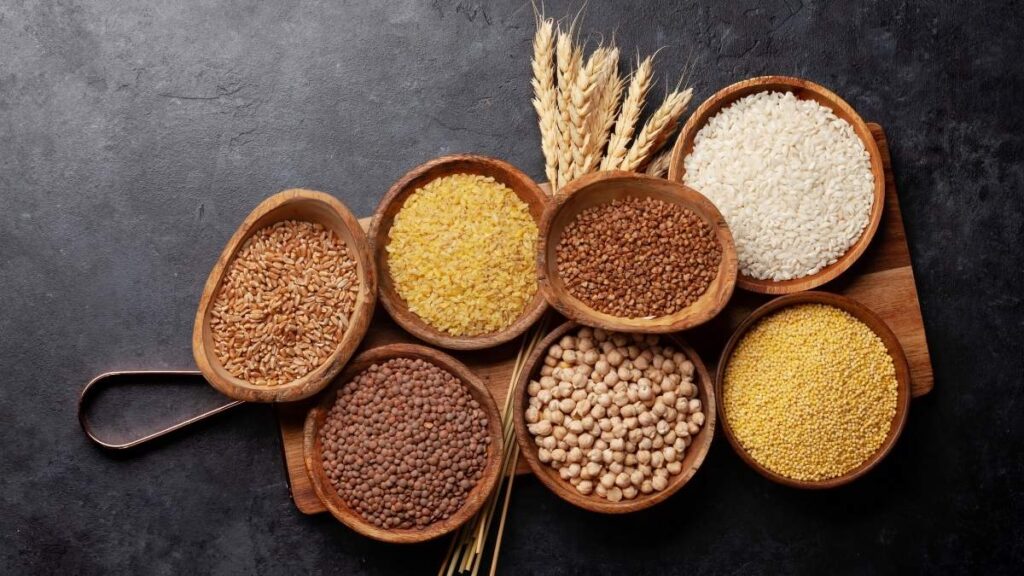
Whole grains do the opposite. They lower C-reactive protein levels in your blood—a key marker of inflammation—and recent studies found higher whole grain consumption linked to lower risk of knee osteoarthritis.
The fiber in whole grains supports gut health, which reduces inflammation throughout your body.
Eat 6 ounces of grains daily, with at least 3 ounces from whole grains.
Easy Swaps:
- Brown rice instead of white rice
- Whole wheat bread instead of white bread
- Oatmeal instead of sugary cereal
- Quinoa instead of white pasta
What to Buy: Look for “100% whole grain” or “100% whole wheat” on the label. “Multigrain” or “wheat bread” doesn’t mean whole grain. Companies use these words to trick you.
Ancient Grains Worth Trying: Ancient grains have anti-inflammatory benefits. Try bulgur, farro, or spelt. They taste nuttier than regular wheat and keep you full longer.
One Important Exception: Avoid whole grains if you have celiac disease or gluten sensitivity. In that case, try quinoa, brown rice, or certified gluten-free oats.
Cooking Time Saver: Make a big batch of brown rice or quinoa on Sunday. Store it in the fridge. Reheat portions throughout the week. Add vegetables and protein for quick meals.
9. Beans and Legumes
Cheap. Filling. Good for your joints.
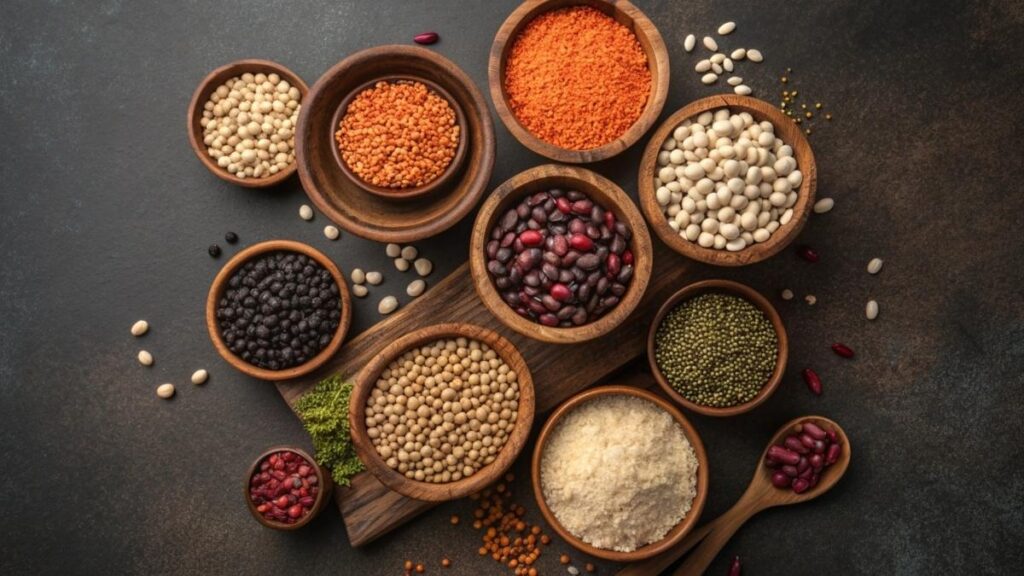
Scientists identified antioxidant and anti-inflammatory compounds in 10 common bean varieties, and beans contain about 15 grams of protein per cup to support muscle health.
Fiber in beans helps lower CRP levels. Small red beans, kidney beans, and pinto beans rank in the USDA’s top antioxidant foods.
Eat 1 cup several times a week.
Best Types:
- Red kidney beans
- Pinto beans
- Black beans
- Lentils (cook fastest)
The Gas Problem: Yes, beans cause gas for many people. Here’s how to reduce it:
- Rinse canned beans thoroughly
- Start with small amounts and build up
- Try lentils first—they’re easier to digest
- Add a strip of kombu seaweed when cooking dried beans
Canned Is Fine: Canned beans work well—just rinse them to reduce sodium. It takes 30 seconds and washes away about 40% of the salt.
Ways to Eat More Beans:
- Add to soups and stews
- Mash them for burrito filling
- Toss into salads
- Make hummus from chickpeas
- Use as a side dish seasoned with garlic and herbs
Time-Saving Tip: Open a can of black beans. Drain and rinse. Heat with cumin and garlic powder. Dinner side dish in 5 minutes.
10. Citrus Fruits
Oranges, grapefruits, lemons, and limes do more than fight colds.
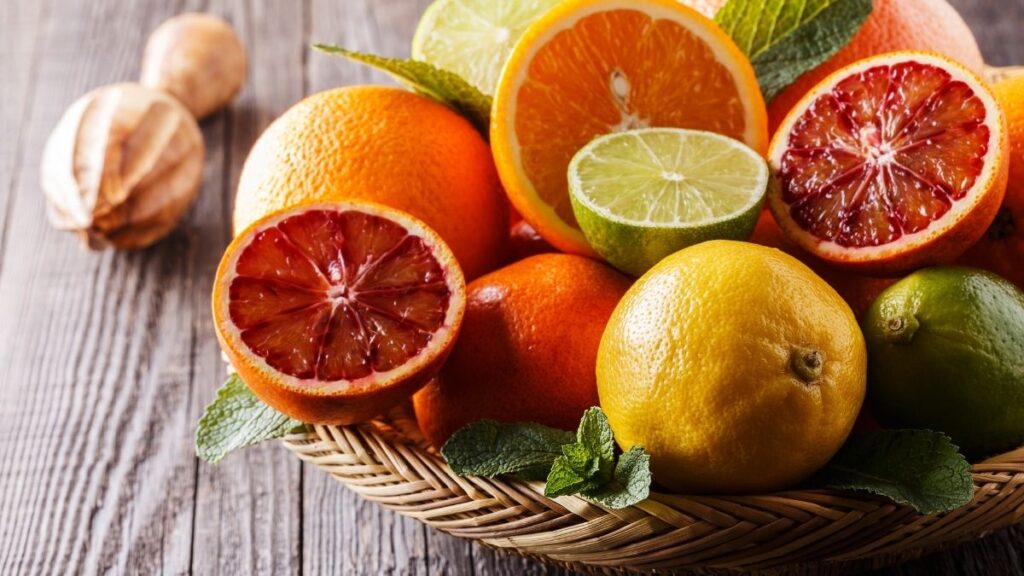
Vitamin C in citrus helps prevent inflammatory arthritis and maintain healthy joints, is essential for collagen synthesis to keep cartilage strong and resilient, and works as a potent antioxidant that neutralizes free radicals to reduce oxidative stress.
Citrus also contains hesperidin, a compound with anti-inflammatory properties.
Eat 1-2 servings daily.
Whole Fruit Beats Juice: Juice is mostly sugar without the fiber. Eat the whole fruit instead. Your blood sugar stays stable and you get all the benefits.
Use the Zest: The colored part of citrus peel has extra antioxidants. Grate lemon or orange zest into recipes. Add it to baked goods, pasta, or fish dishes.
Easy Ways to Eat More:
- Keep oranges on your counter where you’ll see them
- Add lemon juice to water
- Squeeze lime on tacos or fish
- Eat grapefruit for breakfast
Grapefruit Warning: Grapefruit interferes with many medications. If you take prescription drugs, ask your doctor before eating grapefruit regularly.
Save Money: Buy citrus fruits in season (winter) when they’re cheaper and taste better. They last 1-2 weeks in the fridge.
11. Dark Chocolate (70%+ Cocoa)
Finally, something that tastes like dessert.

Cocoa contains antioxidants that fight inflammation and genetic tendencies toward insulin resistance, and higher cocoa percentage means stronger anti-inflammatory effects.
Dark chocolate also has flavonoids that reduce oxidative stress.
Eat 1-1.5 ounces daily—about 3-4 small squares.
The Cocoa Percentage Matters: Choose chocolate that’s at least 70% cocoa. Milk chocolate has too much sugar and not enough cocoa to help. The higher the percentage, the better.
How to Like Dark Chocolate: If you’re used to milk chocolate, dark chocolate tastes bitter at first. Start with 60% cocoa. Work up to 70%. Then try 85%.
Let a square melt on your tongue instead of chewing it. The flavor develops slowly and tastes less bitter this way.
When to Eat It: Have your chocolate after dinner. It satisfies your sweet tooth and gives you something to look forward to. Plus, the small amount of caffeine in dark chocolate won’t keep you awake if you eat it hours before bed.
Don’t Go Overboard: Yes, dark chocolate is healthy. No, you can’t eat the whole bar. Stick to 3-4 squares. It still has calories and fat.
Brand Doesn’t Matter Much: Store brands work fine if they’re 70%+ cocoa. Check the ingredients: cocoa, cocoa butter, and sugar should be the first three things listed.
12. Broccoli and Cruciferous Vegetables
Broccoli isn’t the most exciting food. But it works.
Broccoli contains sulforaphane, a compound that may prevent or slow osteoarthritis progression. It’s also rich in vitamins C and K, plus calcium for bone-building.

These vegetables have powerful anti-inflammatory and antioxidant properties.
Eat 1-2 cups, 3-4 times a week.
Other Cruciferous Vegetables:
- Cauliflower
- Brussels sprouts
- Cabbage
- Kale (yes, it counts here too)
How to Cook Without Killing Nutrients: Lightly steam for 5-7 minutes. That’s it. Overcooking destroys the beneficial compounds. The vegetables should be bright green and slightly crisp.
Make Them Taste Good:
- Roast with olive oil at 425°F for 20 minutes
- Add garlic and lemon
- Sprinkle with parmesan cheese
- Toss with soy sauce and sesame seeds
Raw Works Too: Add raw broccoli to salads. Dip raw cauliflower in hummus. You get the same benefits without cooking.
The Frozen Shortcut: Frozen broccoli is fine. It’s cheaper and lasts longer. Steam it from frozen in the microwave with a little water for 4-5 minutes.
Kid-Approved Method: Roast cauliflower until the edges get brown and crispy. Even people who hate vegetables like it this way. The caramelization makes it sweet.
Foods That Make Joint Pain Worse
You can’t just add good foods. You also need to cut back on foods that trigger inflammation.
Here’s what hurts your joints:
Processed Sugar: Sugar triggers release of inflammatory chemicals called cytokines. Every time you eat sugar, you’re basically pouring fuel on the inflammation fire.
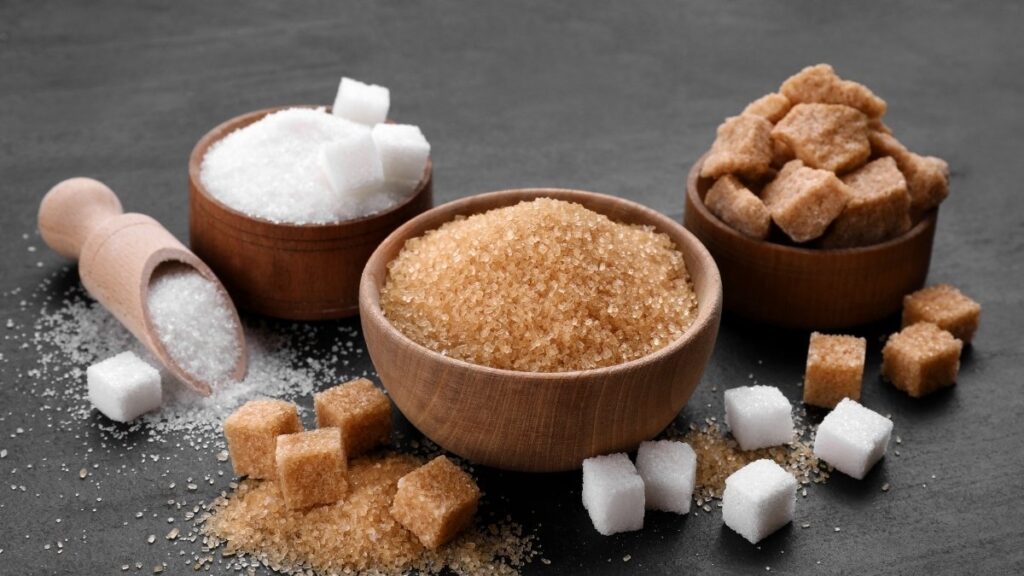
This includes candy, soda, sweetened coffee drinks, and “healthy” granola bars loaded with sugar. Check labels. Food companies hide sugar under 50+ different names.
Refined Carbohydrates: White bread, white rice, and white pasta are linked to higher inflammatory markers. Your body treats them like sugar. They spike your blood sugar fast.
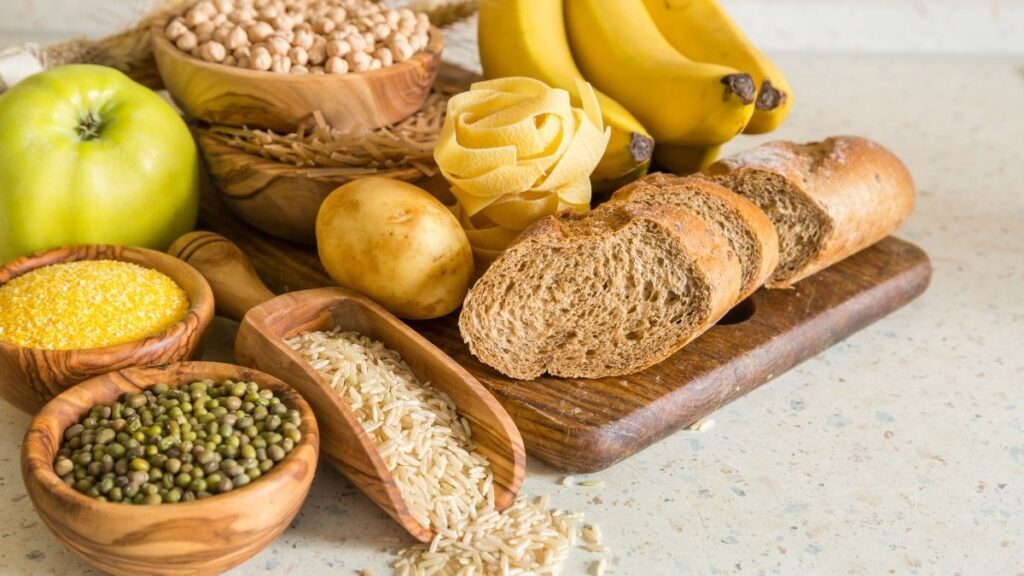
Switch to whole grain versions. The change takes a week to get used to. Then you won’t miss the white stuff.
Saturated Fats: Pizza, cheese, fatty cuts of meat, and butter increase inflammation. You don’t have to cut them out completely. But eat less of them.

Choose leaner meats. Use cheese as a garnish instead of the main event. Save pizza for once a week instead of three times.
Fried Foods: Trans fats in fried food trigger inflammation throughout your body. French fries, fried chicken, doughnuts, and most fast food falls into this category.

These fats stay in your system and keep causing problems long after you eat them.
Too Much Alcohol: One drink might be okay. But excessive alcohol disrupts your gut function and extends inflammation.

If you drink, stick to one drink for women or two for men per day maximum. And skip it on days when your joints hurt more.
Omega-6 Oils: Corn oil, soy oil, and vegetable oil aren’t terrible in small amounts. But most people eat way too much. These oils are in almost every processed food.
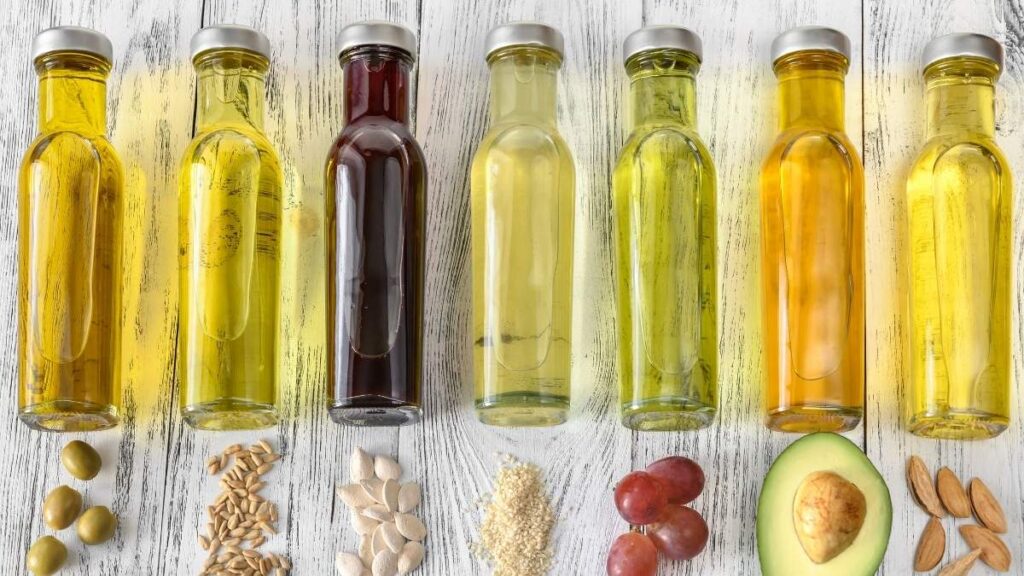
The problem: they promote inflammation when you eat too much compared to omega-3s. Most people eat 20 times more omega-6 than omega-3. Aim for a better balance.
What Else to Watch: Limit refined grains and keep salt to a minimum, as salt causes fluid retention associated with tissue swelling.
Try This Experiment: Remove inflammatory foods for 30 days, then reintroduce them slowly. Pay attention to which ones make your joints hurt more. Your body will tell you what it can’t handle.
The Hardest Part: You’ll have to cook more. Most restaurant food and packaged food contains the ingredients you’re trying to avoid. Batch cooking on weekends helps. Make big portions and freeze them.
One More Thing: Don’t try to change everything at once. Pick one inflammatory food to cut back on this week. Next week, tackle another one. Small changes stick better than dramatic overhauls.
Your 7-Day Anti-Inflammatory Meal Plan
Wondering how to actually eat these foods? Here’s a simple week to get you started.
Day 1:
- Breakfast: Oatmeal topped with blueberries, walnuts, and a drizzle of honey
- Lunch: Spinach salad with grilled salmon, orange slices, and olive oil dressing
- Dinner: Brown rice bowl with black beans, roasted broccoli, and avocado
- Snack: Dark chocolate squares and green tea
Day 2:
- Breakfast: Greek yogurt with strawberries and ground flaxseeds
- Lunch: Lentil soup with whole grain bread
- Dinner: Baked mackerel with roasted Brussels sprouts and quinoa
- Snack: Apple slices with almond butter
Day 3:
- Breakfast: Scrambled eggs with spinach and turmeric
- Lunch: Chickpea salad with kale, cherry tomatoes, and lemon dressing
- Dinner: Grilled chicken breast with sautéed Swiss chard and sweet potato
- Snack: Mixed berries and handful of almonds
Day 4:
- Breakfast: Whole grain toast with mashed avocado and cherry tomatoes
- Lunch: Sardine sandwich on whole wheat with leafy greens
- Dinner: Vegetable stir-fry with tofu, ginger, broccoli, and brown rice
- Snack: Orange and green tea
Day 5:
- Breakfast: Smoothie with spinach, pineapple, chia seeds, and ginger
- Lunch: Quinoa bowl with kidney beans, roasted cauliflower, and tahini
- Dinner: Baked salmon with asparagus and whole grain pasta
- Snack: Carrots with hummus
Day 6:
- Breakfast: Oatmeal with sliced banana, walnuts, and cinnamon
- Lunch: Mixed green salad with grilled chicken, strawberries, and olive oil
- Dinner: Turkey chili with pinto beans, served over brown rice
- Snack: Dark chocolate and raspberries
Day 7:
- Breakfast: Whole grain pancakes topped with blueberries
- Lunch: Tuna salad (made with olive oil, not mayo) on whole wheat
- Dinner: Vegetable curry with chickpeas, turmeric, ginger, and cauliflower rice
- Snack: Grapefruit and handful of pistachios
Shopping List Basics: Keep these staples on hand:
- Frozen berries (all types)
- Canned salmon and sardines
- Bags of spinach and mixed greens
- Olive oil and walnut oil
- Brown rice and quinoa
- Various nuts (buy in bulk)
- Dried and canned beans
- Fresh ginger root
- Turmeric powder
- Green tea bags
- Dark chocolate bars (70%+)
- Fresh or frozen fish
- Broccoli and cauliflower
Prep Tips:
- Wash and chop vegetables on Sunday
- Cook a big batch of brown rice and quinoa
- Hard boil eggs for quick protein
- Portion nuts into small containers
- Make salad dressing for the week
Keep It Flexible: This plan is a guide, not a rule. Swap foods you don’t like for similar ones. Hate salmon? Try mackerel. Can’t eat nuts? Add more seeds.
The goal is getting these anti-inflammatory foods into your daily routine. How you do it matters less than actually doing it.
Other Ways to Help Your Joints Feel Better
Food helps. But it’s not the only answer.
Lose Weight If You Need To: Remember, every pound you lose reduces knee joint load by 4 pounds. If you’re carrying extra weight, dropping even 10 pounds makes a noticeable difference.
The anti-inflammatory foods in this article naturally help with weight loss. They fill you up with fewer calories.
Drink More Water: Joints need water to stay lubricated. Dehydration makes joint pain worse. Aim for 8 glasses a day. More if you exercise or live somewhere hot.
Add lemon or cucumber if plain water bores you.
Move Your Body: It seems backward, but exercise helps joint pain. The key is choosing low-impact activities that don’t damage joints more.
Try:
- Swimming (no impact at all)
- Walking
- Cycling
- Yoga
- Tai chi
Start small. Walk for 10 minutes. Add 5 minutes each week. Movement keeps joints flexible and strengthens supporting muscles.
Sleep Enough: Poor sleep increases inflammation. Aim for 7-9 hours. Keep your bedroom cool and dark. Go to bed at the same time each night.
If joint pain keeps you awake, try a body pillow between your knees. It takes pressure off hips and lower back.
Manage Your Stress: Chronic stress makes inflammation worse. Your body can’t tell the difference between a real threat and work stress. It responds the same way—with inflammation.
Try:
- Deep breathing for 5 minutes daily
- Walking outside
- Talking to friends
- Meditation apps (many are free)
- Limiting news and social media
One Final Tip: Do all these things together. Food works better when you also move, sleep, and manage stress. Think of it as a complete approach, not just a diet.
Start Small and Stick With It
There’s no magic pill for joint pain. No single food fixes everything overnight.
But here’s what works: eating anti-inflammatory foods consistently over time. The Mediterranean and DASH diets show proven benefits for joint health. Both focus on the foods in this article.
You don’t need to be perfect. Start with one change. Add fatty fish to your diet this week. Next week, swap white rice for brown rice. The week after that, try green tea instead of your afternoon coffee.
Changes take time—follow these eating patterns for months to see full benefits. Give it at least 8-12 weeks before you decide if it’s working.
Track how you feel. Write down your pain levels. Note which days are better. You might not notice gradual improvement unless you look back.
Your Action Plan: Don’t overthink this. Don’t wait for Monday. Don’t plan to start “someday.”
Start tonight. Pick one food from this list. Add it to your dinner. Make salmon with sautéed spinach. Or brew a cup of green tea after your meal. Eat a few squares of dark chocolate for dessert.
One food. One meal. One step forward.
Tomorrow, do it again. The day after that, add another anti-inflammatory food.
Small changes add up. Your joints will feel the difference.


